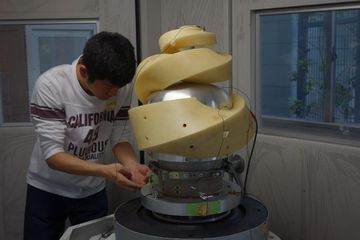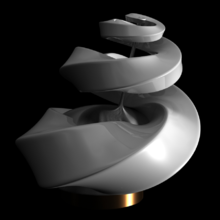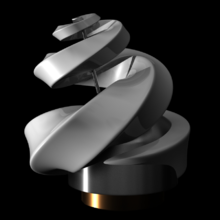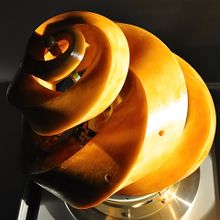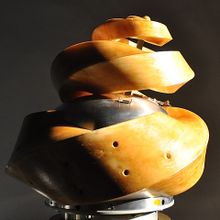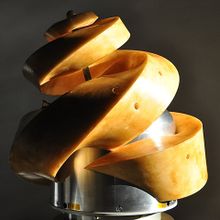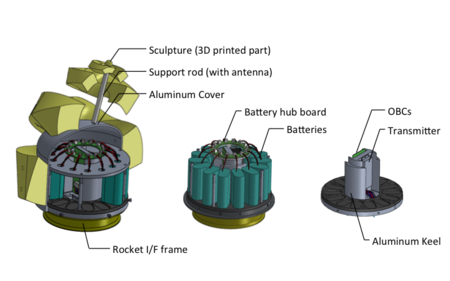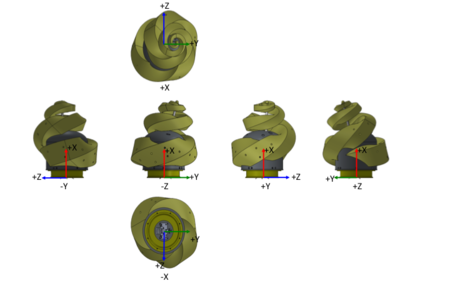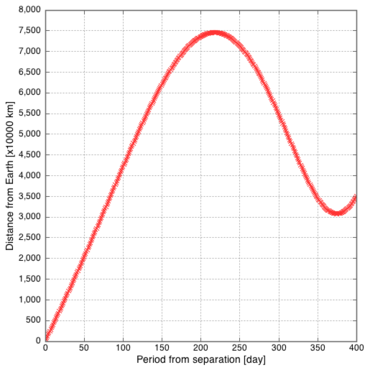Main Page
"DESPATCH" (DEep SPace Amateur Troubadour’s CHallenge) is the second spacecraft in the ARTSAT series. This spacecraft will be launched into an Earth escape trajectory November 2014, along with the Hayabusa-2 asteroid probe. In this page, DESPATCH design, subsystems, and trajectory are detailed.
As a main mission of DESPATCH, we attempt to collect signals from the spacecraft received not only at our own radio station in Tokyo, but at many ham radio stations around the world to reconstruct them back into the original data from the spacecraft. In the following page, the details of the experiment and how to join it are explained.
ARTSAT project
The “ARTSAT: Art and Satellite Project” utilizes a satellite orbiting Earth as a “medium that connects everyday life to the space.” In the course of the project, a variety of interactive works of media art and other artworks are being created. The project is carried out in a collaborative effort around a core team of over 70 members from Tama Art University and The University of Tokyo. The latter team designs and develops satellites and spacecrafts for artistic missions, while the team from Tama Art University is in charge of producing works based on data from the satellite, operating a ground station, and distributing data.
ARTSAT2: DESPATCH
"ARTSAT2: DESPATCH" is the second mission of the ARTSAT project. This spacecraft, 50x50x45 cm in size with a mass of 32 kg has a helix-shaped segment making it a beautiful sculpture. DESPATCH will be launched into an Earth escape trajectory at November 30, 2014 13:24:48, JST (UTC+9).
Missions
DESPATCH has both artistic and technical missions, as described below.
- Artistic missions:
- To create a "deep-space sculpture” by launching the spacecraft into an Earth escape trajectory
- To create “generative poetry" in the deep space and transmit the poetry from the spacecraft for reception on Earth
- Technical missions:
- To experiment with the possibilities of receiving very weak signals using a "cooperative diversity communication" approach, in which fragmented transmissions sent from the spacecraft are received around the world, gathered, and reconstructed
- To test the use of 3D-printed parts for spacecraft
One of the artistic missions, ”generative poetry,” is a broadcast of sentences in English.
They are automatically generated by software running on the spacecraft’s on-board computer (OBC).
The poetry generator is “seeded” using sensor readings such as temperature, angular velocity of the spacecraft, etc.
For details of the "generative poetry" and "cooperative diversity communication," please see the following page.
Features
To complete these missions, DESPATCH will be operating under three unusual parameters:
- The spacecraft will transmit the signals for only a week until it reaches a distance of 2.5 million km from Earth
- It is battery-powered (rather than solar-powered) enabling a highly flexible design
- No uplink command will be sent to the spacecraft — the unit being designed to operate autonomously
Structure and Design
Appearance design
- CGI renderings of DESPATCH
- Appearance of DESPATCH flight model
Structure and components layout
Avionics system
Communication system
To conduct the experiment on cooperative data reconstruction, we will need the cooperation of as many ham operators as possible. For this reason, the 430 MHz band was selected, being the most commonly used frequency in amateur radio satellite communications.
CW was selected as the modulation mode — one of the simplest modulations each bit (1/0) represented as existence or non-existence of the carrier signal. Transmitting high-power signals modulated in this simple manner is expected to raise the probability of the signals being received. In addition, simple modulation will make it easier for ham operators to add their own “hacks” to their hardware — which should result in a heterogeneous redundant system for reception.
The spacecraft is equipped with a transmitter specified in the following table. This transmitter was designed and developed by Nishi Musen Kenkyuusho co, Ltd.
| RF power | 7W |
| Transmission frequency | 437.325MHz |
| Modulation mode | CW |
| Power supply voltage | +7V DC |
| Power consumption | Max. 24.5 W |
| Carrier frequency stability | Max. ±0.3ppm (±130 Hz) |
This transmitter is controlled by an on-board computer and an integrated-circuit timer. Signals are transmitted using a monopole antenna. The following figures show the simulated antenna patterns. This antenna is attached to a support rod which is located at the center of the helix part.
- Simulated antenna pattern of DESPATCH
The result of the link calculation at our radio station can be downloaded here:
If you want to know the format of the data which is sent to Earth by this transmitter, please see the following page.
Trajectory
DESPATCHは地球脱出軌道に投入され、ちょうど地球の横を並走するような人工小惑星となる。 その軌道は下図に示すとおりであり、打ち上げからおよそ1年ごとに地球に最接近する。 なお、図に示した緑色の軌道は、DESPATCHが相乗りする小惑星探査機はやぶさ2の目標天体(小惑星1999JU3)の軌道である。
地上から観測するとき、DESPATCHは他の惑星と同様に数時間かけてゆっくりと天球上を移動する。
以下のウェブページにて、地上の任意の地点からDESPATCHがみえる時間と方角を予測することができる。
Links
- ARTSAT official site
- SNS
- GitHub
連絡先
info@artsat.jp

